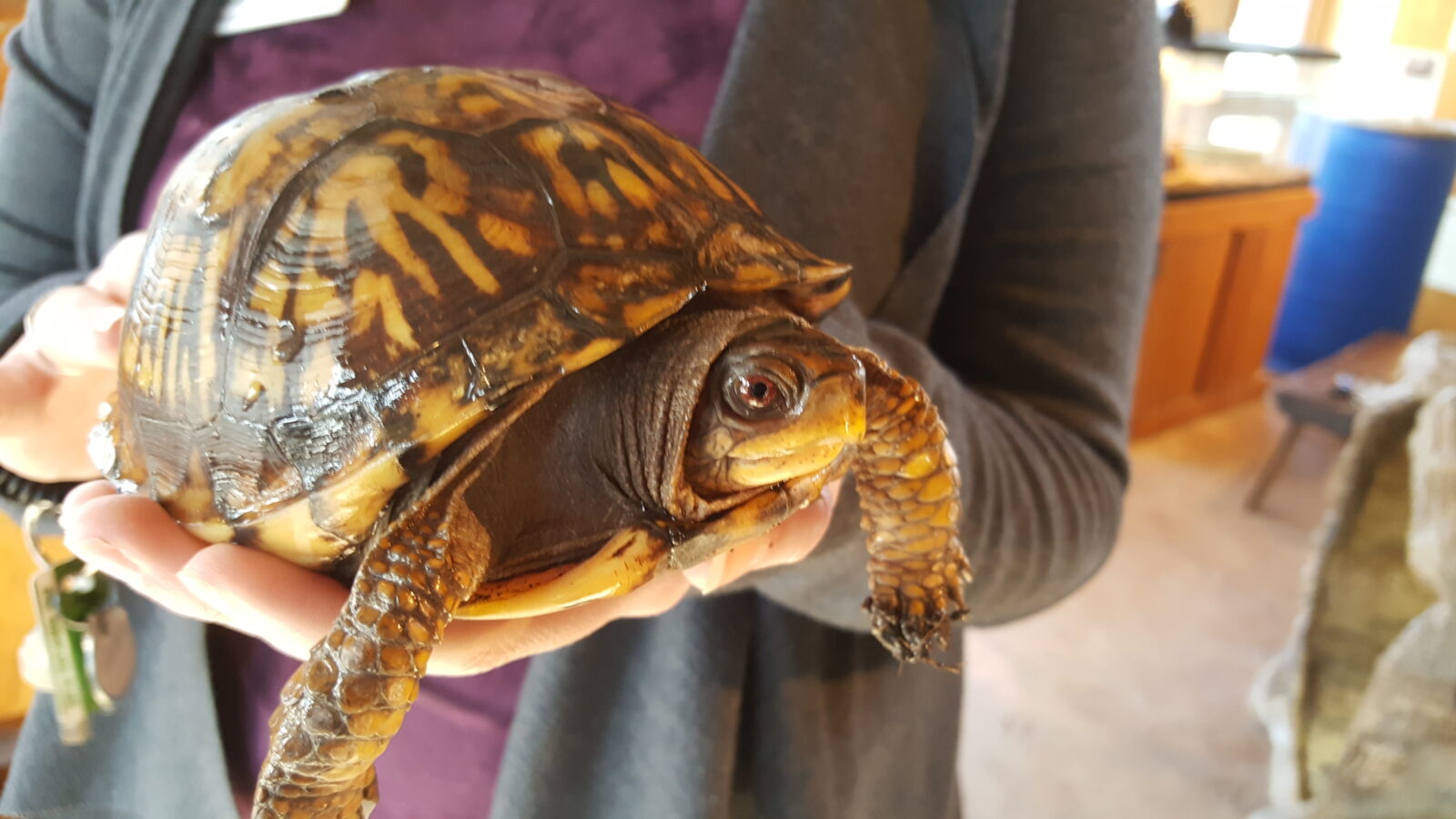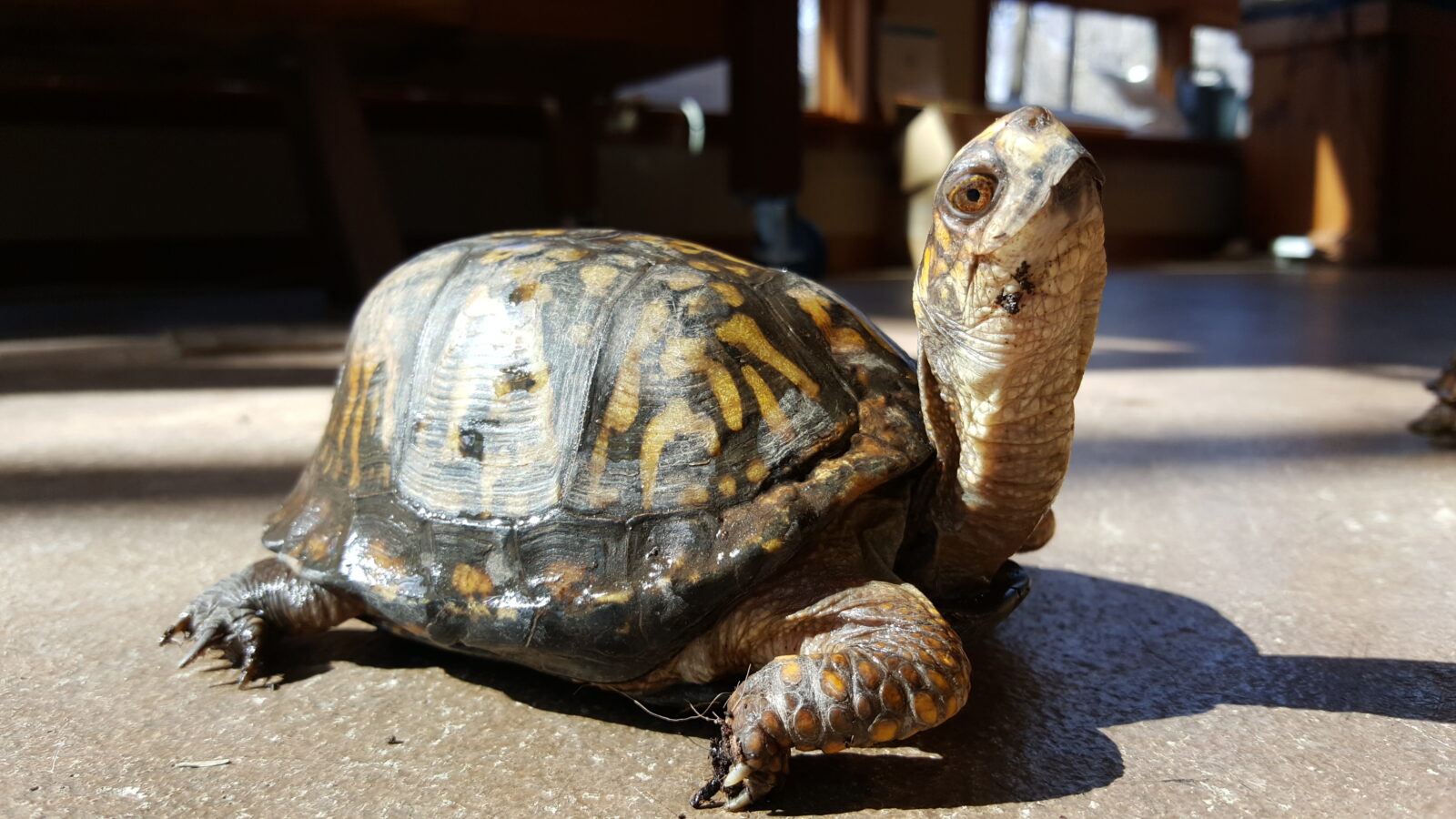Nature Center Animal Ambassadors
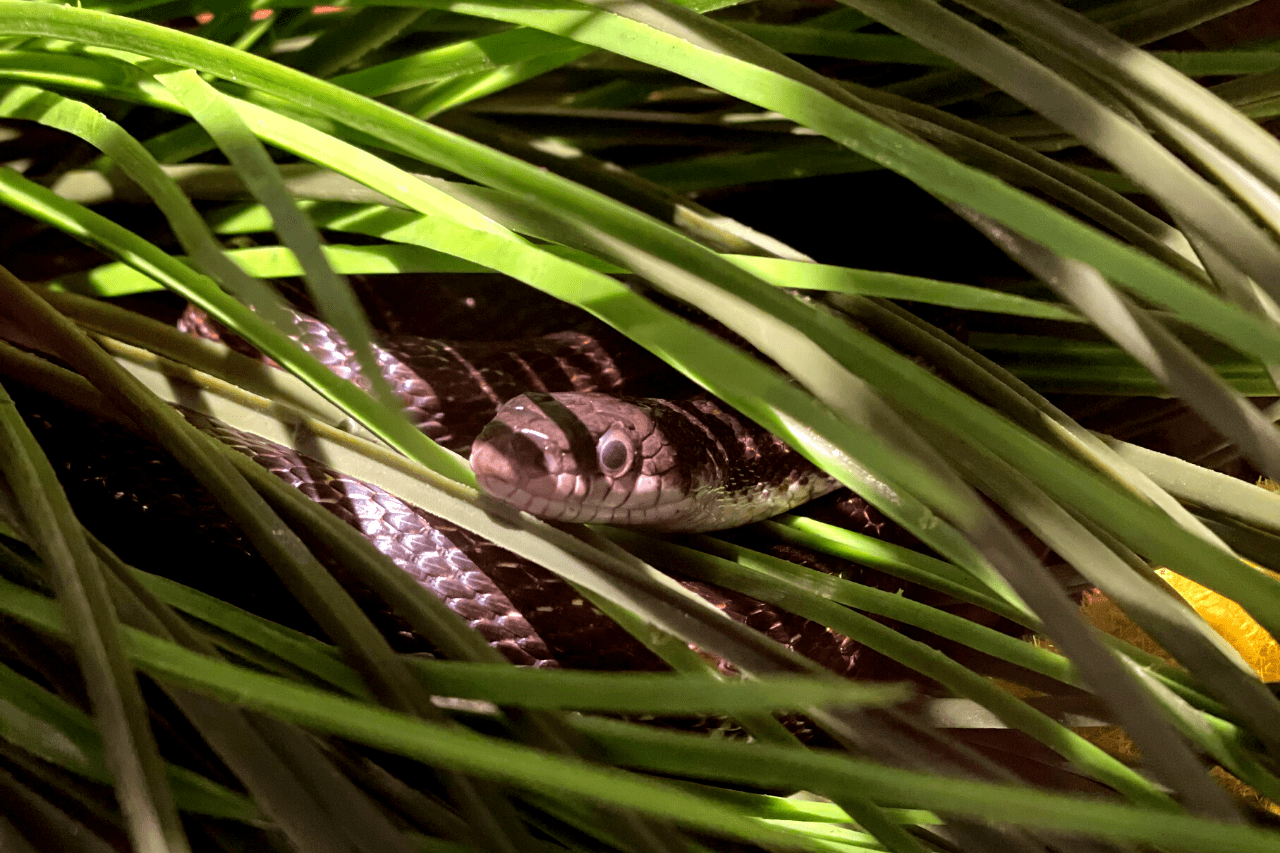
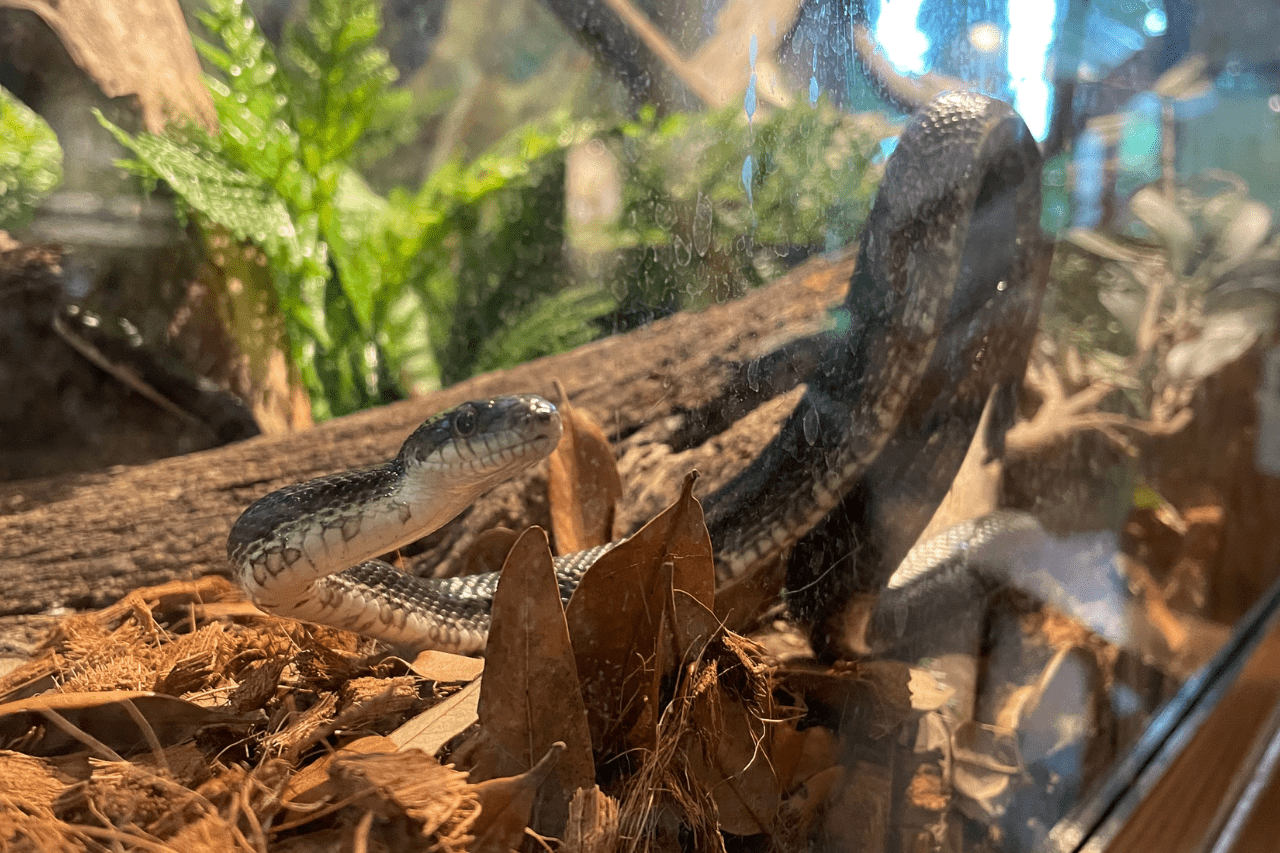
Onyx and Obsidian: Eastern ratsnakes (Pantherophis Alleghaniensis)
Named by Nature Center fans, these ratsnakes are are almost two years old and will eventually outgrow their current home as they will be up to six feet long each.
Eastern Ratsnake Facts:
- The Eastern ratsnake is Ohio's largest snake ranging in four to eight feet long.
- Despite their size, they are non venomous and relatively harmless snakes. When first encountered, most Eastern ratsnakes freeze in position. If threatened, they will vibrate their tail and emit a foul-smelling substance.
- Eastern ratsnakes are accomplished climbers and are often found high in trees or in barn rafters.
- The ratsnake is one of Ohio's most beneficial assets as they play an essential role in controlling destructive rodents.

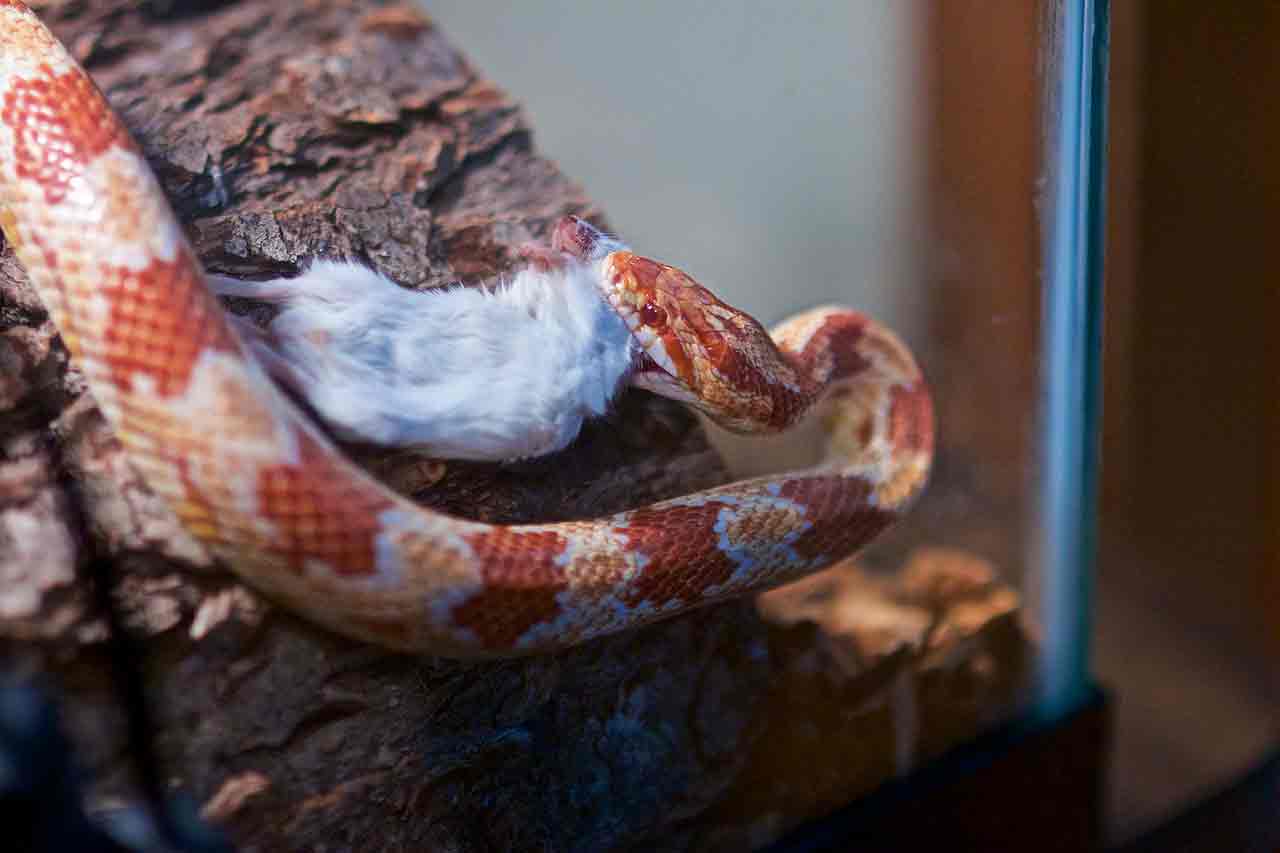
Sunset the Corn snake(Pantherophis guttatus)
Sunset was born in 2001 in captivity at University School in Shaker Heights. He was given to the Nature Center by Kris Sinnenberg of Shaker Heights and has been here since 2009!
Corn snake facts:
- Corn snakes are usually found in the southeastern United States, and are not currently found in our region
- Though superficially resembling the venomous Northern copperhead, corn snakes are harmless, non-venomous, and beneficial to humans as they help control populations of wild rodent pests that damage crops and spread disease
- Corn snakes are named for the species' regular presence near grain storage, where they prey on mice and rats that eat harvested corn. Some sources maintain that the corn snake is so-named because the distinctive, nearly-checkered pattern of the snake's belly scales resembles the kernels of corn
- While most corn snakes will eat small rodents, they will also eat reptiles, amphibians, or climb trees to find bird eggs
- When disturbed, corn snakes rattle their tail on their surroundings as a defense mechanism, making them sound similar to a rattlesnake
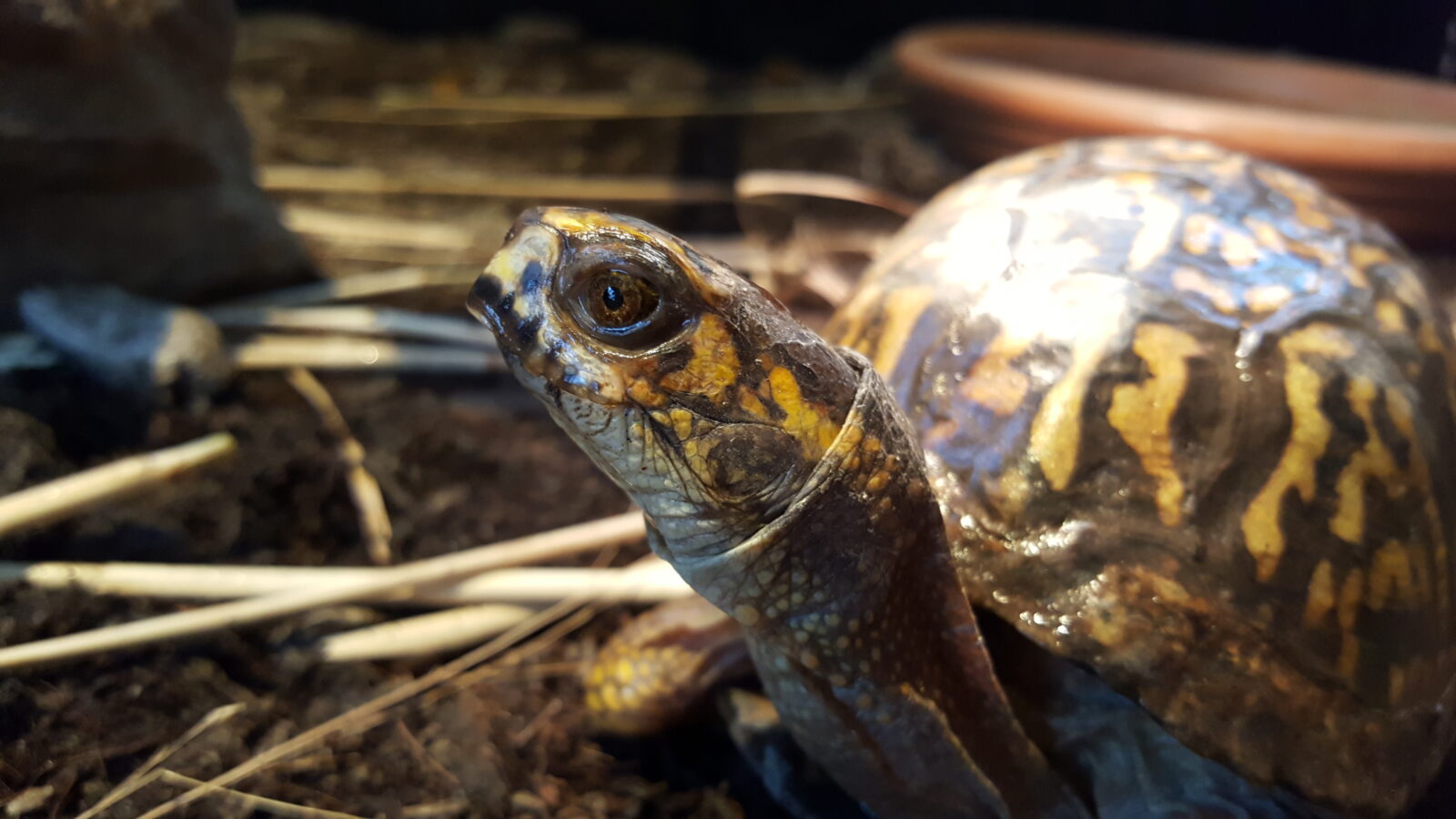
Tripod and Happy: Eastern box turtles (Terrapene carolina carolina)
Happy and Tripod are both eastern box turtles that came to us as rescues this past summer from Herps Alive. They are both female, even though Tripod's eyes appear almost red, which is usually an indicator of a male. Tripod is missing one of her back legs (hence the name). She gets along very well on 3 legs and is our champion worm eater in the summer and burrower in the winter. If you don't see her out and about, she may have buried herself.
Eastern box turtle facts:
- Box turtles are omnivorous and eat fungi, greens, fruits, worms, slugs, insects and more
- Box turtles can live to be over 100 years old
- Male box turtle eyes are red while females are brown
- A female can lay anywhere from 1 to 5 clutches of about 1 to 9 eggs in a single year, even delay laying her clutch for years if resources are scarce
- Box turtles are found throughout the eastern United States in a variety of habitats, but most are common in open hardwood forests, along field or wetland edges, and can be found soaking in puddles or streams

